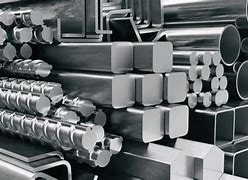
Tabel Berat Pipa Stainless Steel
Berikut adalah tabel berat pipa stainless steel berdasarkan diameter dan ketebalan:
Keunggulan Pipa Stainless Steel
Pipa Stainless Steel memiliki banyak keunggulan, hal ini menyebabkan material ini sangat cocok digunakan / diaplikasikan pada proyek dibidang kontruksi maupun industri. Apa saja keunggulannya berikut yang telah kami rangkum dalam beberapa sumber :
Mengapa Membeli di PT Mitra Jaya Makmur Abadi?
PT Mitra Jaya Makmur Abadi adalah penyedia sistem perpipaan yang terpercaya dan berpengalaman lebih dari 20 tahun dalam industri produk logam. Berikut adalah beberapa alasan mengapa Anda harus membeli pipa stainless steel dari kami:
Dengan berbagai keunggulan dan layanan terbaik, PT Mitra Jaya Makmur Abadi adalah pilihan tepat untuk memenuhi kebutuhan pipa stainless steel Anda. Hubungi Kami untuk detail produk yang Anda butuhkan kepada kami dan temukan produk pipa dan perlengkapanya yang berkualitas yang Anda butuhkan untuk proyek Anda.
Selain pipa ini kami pun menawarkan produk pipa besi / baja lainnya selengkapnya Anda dapat mengunjungi katalog kami pada halaman produk.
0%0% menganggap dokumen ini bermanfaat, Tandai dokumen ini sebagai bermanfaat
0%0% menganggap dokumen ini tidak bermanfaat, Tandai dokumen ini sebagai tidak bermanfaat
Tiga alternatif jalan menuju Karya Elok : Langsung dari jalan Pahala II - Melalui jalan Darul Falah - Melalui Komplek Departemen Keuangan [jalan Jaya Wijaya tembus jalan Pahala II], Karang Tengah [Ciledug]
Mild steel dan juga stainless steel adalah dua jenis baja yang terkenal multifungsi dalam proses fabrikasi logam.
Keduanya menjadi yang paling populer digunakan dalam proses fabrikasi logam, karena menimbang keunggulan-keunggulannya. Meski sama-sama menjadi favorit, dua jenis baja ini memiliki sejumlah perbedaan.
Bagi Anda yang berencana menggunakan jasa fabrikasi logam, artikel ini akan mengulas A-Z tentang kedua baja tersebut. Mulai dari pengertian, perbedaan hingga rekomendasi jasa fabrikasi logam dan metal terbaik.
Definition and classification of Stainless steel coils
A finished steel product known as a coil has been rolled, wound, or coiled after being formed into a sheet or strip. According to current products and international standards, steel coils are divided into cold-rolled steel coils and hot-rolled steel coils, or stainless steel coils, carbon coils, and galvanized steel coils based on the experience gained over the years. The steel coil supplier will then give you access to the following information:
To create hot-rolled steel coils, semi-finished goods must first be rolled, annealed, and reduced to a specific thickness. Pipes, steel doors, and tanks are made of hot-rolled steel, which is also used to make cold-rolled steel.
Cold-rolled steel coils
To remove rust from hot-rolled steel plates, the plates are “pickled” in a mild acid solution, followed by washing, brushing, drying, oiling, uncoiling, and cold rolling through the plate. It is then wrapped into coils after being forced through a size-reduction reduction device.
When it comes to components other than carbon, silicon, manganese, sulfur, and phosphorus, a carbon coil is a form of steel that often contains very little of them. As a result, it lacks a substantial alloying element. Applications in the second grade that don’t have a lot of requirements for surface quality are ideal candidates for carbon coils. Carbon coil steel is available in a range of grades and thicknesses to accommodate the numerous uses for this material.
A hot-rolled or cold-rolled sheet or strip is coated with zinc using either the hot-dipping or electrolytic deposition procedures, which results in the galvanized coil. Typically, the hot dip method’s zinc coating is thick enough to prevent corrosion without additional coating. Except in weakly corrosive situations, materials that have been electronically galvanized cannot be used for corrosion-resistant applications without additional chemical treatment and painting.
Pengaplikasian Pipa Stainless Steel
Pipa stainless steel digunakan di berbagai sektor industri dan aplikasi, antara lain:
Lihat Juga produk Pipa galvanis
Perbedaan Mild Steel dan Stainless Steel
Berikut adalah sejumlah perbedaan dari material mild steel dan juga stainless steel
Pengaplikasian Pipa Stainless Steel
Pipa stainless steel digunakan di berbagai sektor industri dan aplikasi, antara lain:
Lihat Juga produk Pipa galvanis
Keunggulan Pipa Stainless Steel
Pipa Stainless Steel memiliki banyak keunggulan, hal ini menyebabkan material ini sangat cocok digunakan / diaplikasikan pada proyek dibidang kontruksi maupun industri. Apa saja keunggulannya berikut yang telah kami rangkum dalam beberapa sumber :
Mengenal Mild Steel dan Stainless Steel
Stainless steel atau yang umum dikenal sebagai baja anti karat adalah material yang disusun atas besi dan juga karbon. Di dalamnya juga terdapat campuran dari kromium, serta elemen lain seperti nikel dan mangan.
Bahan material satu ini banyak digunakan dalam pembentukan berbagai produk industri, mulai dari rumah tangga sampai medis. Banyak disukai karena sifatnya yang tahan terhadap oksidasi dan korosi serta tidak membutuhkan polesan tambahan berkat lapisan kromium.
Mild steel atau baja lunak sendiri tersusun atas kandungan karbon yang lebih rendah daripada baja pada umumnya. Dengan kadar sekitar 0.05% hingga 0.25% dari berat totalnya. Sementara baja umumnya memiliki kandungan karbon antara 0.30% hingga 2.0%.
Sama halnya dengan stainless steel, mild steel juga banyak digunakan dalam berbagai industri. Mild steel lebih rentan mengalami korosi atau berkarat, namun masih bisa diantisipasi melalui proses pengecatan.
Sifat mild steel yang lunak juga membuatnya banyak disukai, karena mudah dibentuk. Berbeda dari stainless steel yang tidak dapat menawarkan banyak perubahan karena ketidakmampuannya untuk ditempa seperti mild steel.
Hal ini disebabkan karena stainless steel merupakan bahan yang jauh lebih keras, sehingga seringkali lebih cocok untuk proyek konstruksi tertentu. Stainless steel juga sangat tahan panas, itulah sebabnya ini merupakan pilihan yang baik untuk membawa bahan kimia dan peralatan rumah tangga.
Mechanical properties
Mechanical properties from European Standard EN 10088-3 (2014)[9] (for product thickness below 160 mm):
*for thickness ≤ 5 mm (0.20 in)
The minimum yield stress values are about twice as high as those of austenitic stainless steels.
Duplex grades are therefore attractive when mechanical properties at room temperature are important because they allow thinner sections.
map of 128 hrs age hardened duplex stainless steel with the ferrite phase forming the matrix and austenite grains sporadically spread. The ferrite phase volume fraction is 58%.
EBSD map with austenite grains excluded (white). The scale bar is 500 μm. Colours denote the crystal orientation and are taken from the inverse
at the lower right corner.
EBSD map with austenite grains excluded (white). The scale bar is 500 μm. Colours denote the crystal orientation and are taken from the inverse pole figure at the lower right corner. Duplex stainless is widely used in the industry because it possesses excellent oxidation resistance but can have limited toughness due to its large ferritic grain size, and they have hardened, and embrittlement tendencies at temperatures ranging from 280 to 500 °C, especially at 475 °C, where spinodal decomposition of the supersaturated solid ferrite solution into Fe-rich nanophase ( a ´ {\displaystyle {\acute {a}}} ) and Cr-rich nanophase ( a ´ ´ {\displaystyle {\acute {a}}{\acute {}}} ), accompanied by G-phase precipitation, occurs,[13][14][15] which makes the ferrite phase a preferential initiation site for micro-cracks.[16]
Duplex stainless steel grades must be cooled as quickly as possible to room temperature after hot forming to avoid the precipitation of intermetallic phases (Sigma phase in particular) which drastically reduce the impact resistance at room temperature as well as the corrosion resistance.[17]
Alloying elements Cr, Mo, W, Si increase the stability and the formation of intermetallic phases. Therefore, super duplex grades have a higher hot working temperature range and require faster cooling rates than the lean duplex grades.























